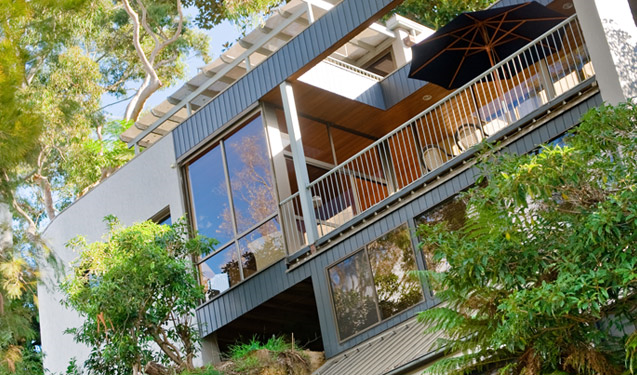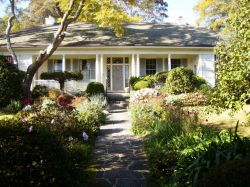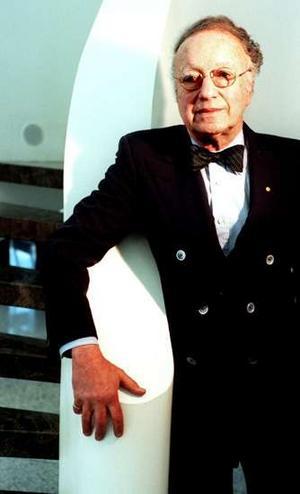Introduction
Modernism is considered as a socially oriented type of artistic movement that is better revealed through manifestation of the industrialized era of the twentieth century. Modernism also deviates from the excessiveness of the Victorian style and resorts to propaganda of social and cultural reconstruction. It is generally acknowledged and formally founded in Europe with the emergence of the Bauhaus school in Germany that gave rise to the creative work of such famous modernists as Walter, Miles van de Rohe, and le Corbuser. Finally, it is worth mentioning that Frank Lloyd Wright, the American modernist, was highly inspired by overt living spaces of Japanese dwellings and had an enormous impact on the next generation of architects, which inherited his desire to play with spaces.
Modernism and industrialization in Europe
The term modernism has always been considered as the most disputable and the most confusing one in various spheres of art. Hence, modernism in architecture is aimed at describing an artistic approach of functional and rational analyses, which is found in the Bauhaus projects of Germany (Hollub 2003:277). This term is often defined as an intermediary between the traditionalism, the predecessor of this style, and post-modernism succeeding it. Either in music or in painting, modernism is usually defined as deviation from social reality. Modernism rejects classical forms thus referring to the fragmentary world where all forms and sounds are subjected to experimentation. This style also emerges as an outcome of the social and economical situation in the world between the two Wars.
Generally speaking, the term modern denotes and identifies things that can refer to nothing but original. Arising from this, it is reasonable to assume that modernity is a more common phenomenon which can be applied to any displays of modern tendencies (Pile 2005:273). The following term had already existed in the classical and medieval era serving to distinguish the new from the old (Hollub 2003:278). Modernity, therefore, is a complex combination of science, morality, and creativity irrespective of time spans.
Comparing these two terms – modernism and modernity – it should be stressed that modernism is an aesthetic display of modernity, it one angle that determines the art as a integrity of the views. Hence, modernism mostly relates to the artistic movements within certain spheres of art, like music, dance, painting, and architecture (Hollub 2003:280).
The advent of modernity, or the division of human activities according to the modern waves invading different spheres of life can be perceived as the process of modernization, which is a kind of stage and brunch development of the most influential modern tendency (Hollub 2003:283). This process touched the social situation in Australia thus discovering another dimension of development, both political and cultural. Australia has always been considered as a modernist society being especially relevant when applying this term to the process of urbanization and industrialization of Australian cities (Eysteinsson 2002:769). This state was indulged in this stream from the very beginning where society and artistic movements manifested the cultural and social conformity in the modernistic context. Additionally, modernism in Australia results in the empire policy of industrialization thus recognizing relations between the colonial past and the modernistic movement. Therefore, modernism is perceived as “a metropolitan imposition and cultural domination by the colonizers” or “collective resistance of the colonized, anti-colonial insurgency at the level of culture” (Eysteinsson 2002:769).
Australian architectures
In the modern era, the rise of building in Australia was largely predetermined by economical and social issues. In particular, the period of World War I was an active session of building implying the use of vital and vigorous styles. The large-scale building also touched the capital of Australia where one could perceive the prevalence of the Federation style (MacMahon 19). The brightest examples of architecture were marked by the bravery of forms and constructions, unconventional techniques and vigorous colors. The most famous architects of this time- Burley and Marion Griffin, Harry Seidler, Robin Boyd, and Hardy Wilson- greatly contributed to the development of the art of construction in the era of urbanization. A closer consideration deserves the houses of Castlecrag where Burley and Marion Griffin managed to combine the purity of modernism strokes with the
Meller House at Castlecrag 1

Another wave of modernism originated from English emigrants, the main representative of which is Leslie Wilkinson. His style was narrowed to the building of beautiful and freestanding houses constructed on small blocks of land with the combination of natural features of the view.
Eryldene is the masterpiece created by Hardy Wilson where he managed to present the return to simple forms as the underpinning of modern architecture. One can also view the traditional undertones of this construction; at the same time, it is possible to notice the modernist strokes of the surrounding flora (Macmahon, 2001:21).

Perhaps, the most influential figures of the modernist movement in Australia in the 30s of the twentieth century were Harry Siedler and Robin Boyd. Both architects developed their own direction in constructions and at the same time they were striving to break the conventional vies building design (Day 2004:n.pag).
Robin Boyd
Robin Boyd, the supporter of free and unlimited spaces, introduced domesticity to the architecture. He also belonged to the family of famous architects, potters, and writers. Being the brightest representative of the modernist movement, his creative works were directed at fighting against conservatism. In general, the architect saw the houses as mere containers that can be filled with spaced of divergent forms. The main merits of Boyd lied in the introduction of innovative look at the forms like diagonal bracing windows, domestic curtain walls, and spiral constructions. His geometry of spaces greatly influenced the current image of Australian cities (Day 2004:n.pag). Especial consideration deserves the Featherston House erected in 1967, which presents a huge container with the enclosed garden. The entire house is a bid space crammed with unusual details and encountering spaces. Here the living, dining, and bedroom areas are supported on four open platforms hung within the space. The transparency of ceiling allows to softly illuminate the enclosed garden thus forming the entity with the outside nature. In a whole, the Featherstone house is an outright example of the domestic design that expresses Boyd’s vision of houses as a multidimensional interpretation of distorted spaces (Featherston House 2008).

It should be stressed that Boyd’s constructions, on the one hand, have a simple outer structure thus serving as a protest of conventional images of building techniques. On the other hand, the interior sophisticated forms also manifest Boyd’s reluctance to follow the traditions of closed spaces. In addition, Boyd strived to preserve a tangible connection between the building environment and natural landscape and to create the design that would mirror the lifestyles of modernist society. His architectures also managed to encompass and to develop the sense of identity among Australian modernists.
Like Robin Boyd, Harry Seidler was devoted to the design of domestic interiors. The horizontal configuration with sleeping areas located in one dimension was the main feature of Seidler’s dwellings before 1970. Later constructions proclaimed the prevalence of the vertical dimensions introduced into interior design of the houses (Siedler and Abel vol. 2:2003:6). Seidler’s works are not reduced to boring and monotonous forms and colors, as asymmetry and rejection of repetitive forms serves as the basis of his building projects. The urban character and geometric forms discloses the architect’s aspiration to preserve the modernistic spirit of his works. What is more, Seidler succeeds in combining the openness of modern elements with the suppleness of reinforced concrete structures in order to reveal an expressionist vision on the building form (Seidler and Dobney:1997).

On of his earliest works where the architect demonstrated technical prowess was the Rose House constructed in 1952. For this building, Seidler worked out the footbridge that connected two elements of the entire scheme. The Rose House encompasses the usage of diverse materials, including the timber floors, the roof supported by a steel structure, and glass war covering the space from floor to ceiling that gives an impression of unlimited space (Seidler and Abel vol. 1:2003:7). In general, the most part of Seidler’s dwellings were erected entirely from the ground, which were supported by columns. Such floating constructions perfectly suited the climate rural Australia so that it is not vain that the architect’s building preferences spread over the country sites.
The above shows that both architects put their emphasis on the suburban areas due to the rapidly growing population of Australia. These two creative personalities changed the people’s outlooks on architecture, which was based on the implementation of geometries becoming more flexible and fluid, and sensual forms introducing the harmonious perception of different dimensions of the building. Further, both architects attempted to link the natural subtle forms and rough materials applied in the house; moreover, there observe a close integration of the artificial materials and the enclosing natural landscapes. The play of spaces was revealed through considering the house as the entire vacuum with inserted vertical, horizontal, diagonal, and even spiral spaces.
Conclusion
Analyzing the modernist architecture in economical and social terms of this period, it is worth mentioning that Boyd and Seidler’s works also bear a practical character, their work was also aimed at creating a dream of a house for Australian people living in the time of social realism. Therefore their creative activities reflect the main characteristics of Australian cities but with adding the elements that shaped the sense of Australian identity. The social and cultural integrity was especially seen in the Boyd’s dwelling that resembled containers where space was not separated by the walls. Instead, the structures represented different dimensions of social minds that mirrored the rise of protest against conservatism and established orders. In a whole, modernism in Australia witnessed the most significant spread of modernist spirits dictating the integration policy in terms of culture and economical development of the country.
Bibliography
Day, N 2004, ‘Robin Boyd, at home’, theage.com.au, Web.
Eysteinsson, A, and Liska, V 2007, Modernism, volume2, John Benjamins Publishing Company, the Netherlands.
‘Featherston House’ 2008, RAIA Victoria – Significant 20th Century Architecture, Web.
Holub, R 2003, ‘Modernism, Modernity, and Modernization’, The Cambridge History of Literary Criticism: Twentieth-century historical, philosophical and psychological perspectives, Cambridge University Press, United Kingdom.
McMahon, B 2001, The architecture of East Australia: an architectural history in 432 individual presentations. Edition Axel Menges, London.
Pile, F 2005, ‘A History of Interior Design’, Laurence King Publishing.
Seidler, H, and Abel, 2003, Houses and interiors, volume 1, Images Publishing, Australia.
Seidler, H, and Abel, 2003, Houses and interiors, volume 2, Images Publishing, Australia.
Seidler, H, and Dobney, S 1997 Harry Seidler: selected and current works. Images Publishing, Australia.